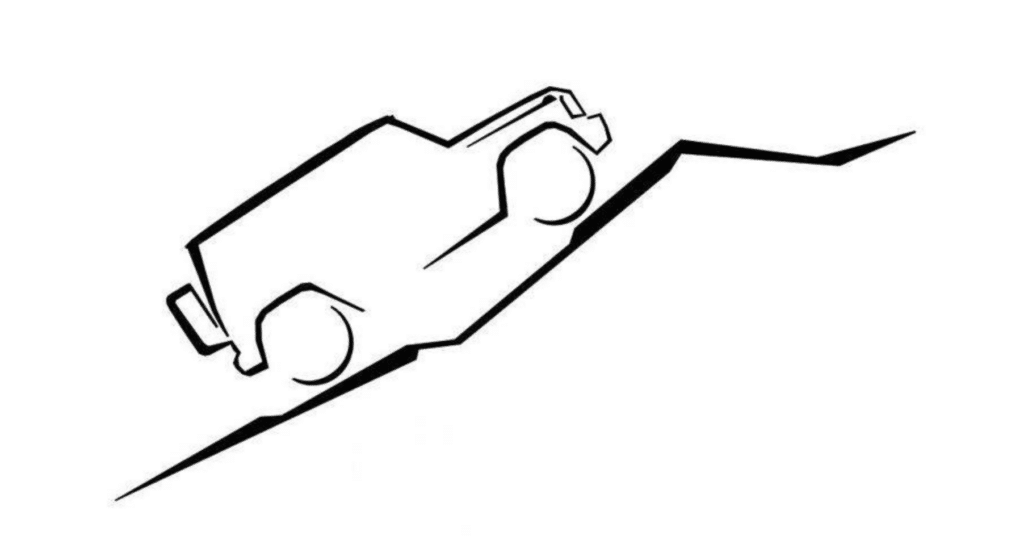In a recent decision that underscores the European Union Intellectual Property Office (“EUIPO”)’s strict stance on distinctiveness, the European Union General Court dismissed Mercedes-Benz Group AG’s appeal, thereby, affirming the EUIPO’s refusal to register a figurative trademark depicting an off-road vehicle – specifically, the silhouette of Mercedes’ popular G-Wagon SUV – climbing a hill. The General Court’s decision reinforces the consistent line of EUIPO case law that mandates that “a minimum of distinctive character is sufficient for the absolute ground of refusal contained in [Article 7(1)(b) of Regulation (EU) 2017/1001] to be applicable.”
The Background in Brief: Mercedes-Benz filed an application on December 6, 2022, seeking a registration for a two-dimensional figurative sign for use on “motor vehicles and parts thereof; tires and wheels” (in Classes 12 and 18). The EUIPO examiner refused to register the mark in part, citing a lack of distinctiveness for the goods in Class 12. The Fifth Board of Appeal upheld that rejection in May 2024, concluding that the applied-for mark represents a typical rendering of an off-road vehicle and lacks any source-indicating capability.
Delving into Distinctiveness
Arguing before the General Court, Mercedes-Benz maintained that the EUIPO erred in refusing registration for its G-Wagon mark on the basis that even minimal distinctiveness should suffice under EU trademark law. In particular, Mercedes alleged that the trademark at the center of its application for registration, while evocative of an off-road vehicle, featured stylized, design elements unique to Mercedes that are sufficient to identify commercial origin.
Unpersuaded, the General Court reaffirmed that for a sign to qualify as a trademark, it must perform its essential function: allowing the average consumer to distinguish the goods of one company from those of another. Absolute novelty is not required for a sign to indicate the source of the goods/services upon which it is used, the court stated. However, the court noted that the sign must diverge meaningfully from customary forms or sectoral norms.

That is a problem for Mercedes, according to the court, as the applied-for G-Wagon trademark is consists of a “summary, graphic depiction of an off-road vehicle climbing a hill,” which the court found typical and readily associated with the nature of the goods, not their origin. Mercedes’ argument that the sign resembles a sketch, as opposed to a photographic depiction, failed to sway the court on this front, which held that the stylization was insufficiently distinctive to transform the image beyond the realm of descriptive or generic iconography.
The Court further pointed to the sign’s conformity with established advertising imagery for off-road vehicles. In the absence of a clear divergence from sector habits or significant stylization, the mark does not meet the bar for registration, the court held.
With the foregoing in mind, the General Court dismissed the appeal, ruling that Mercedes’ mark fails to communicate source identity and instead, amounts to a typical, unremarkable illustration of an off-road automobile. The decision reaffirms the principle that familiar, even well-designed depictions of a product category do not rise to the level of registrable trademarks without a clear, source-indicating element at play.
THE BIGGER PICTURE: The ruling is a cautionary tale for brand owners attempting to register product-centric imagery as trademarks. Even highly stylized or industry-specific illustrations must rise above the level of merely descriptive to qualify for protection. As the EUIPO continues to take a strict view on distinctiveness in design-heavy sectors like automotive, luxury goods companies may need to think beyond representational cues when crafting registrable brand assets.
The case is Mercedes-Benz Group AG v EUIPO, T-400/24 (Gen. Ct., 6th Chamber)














